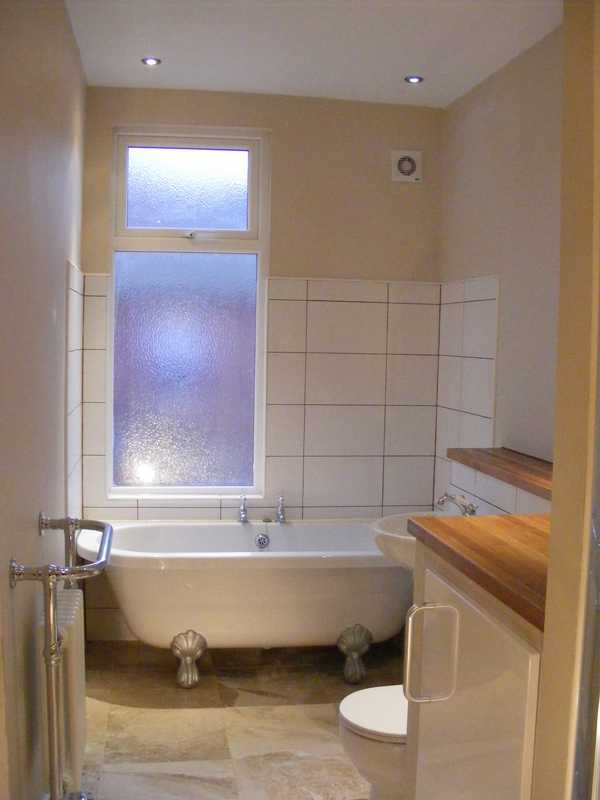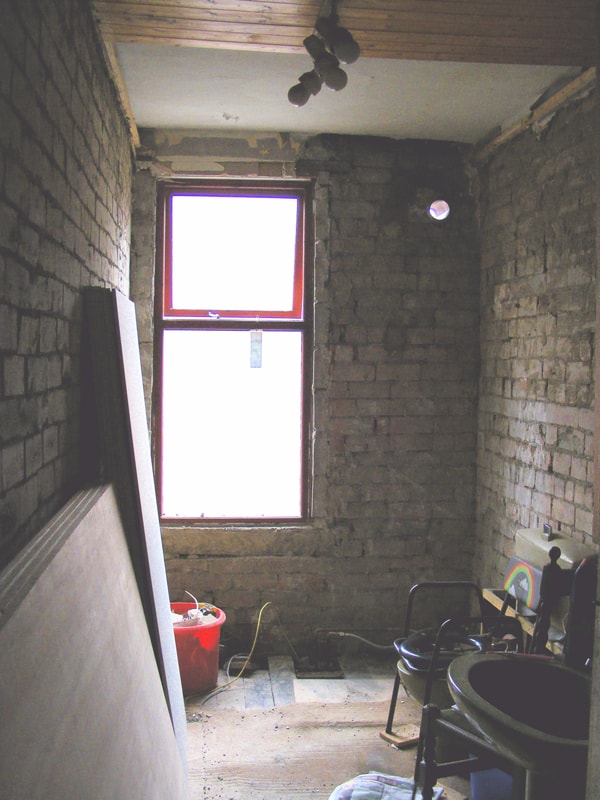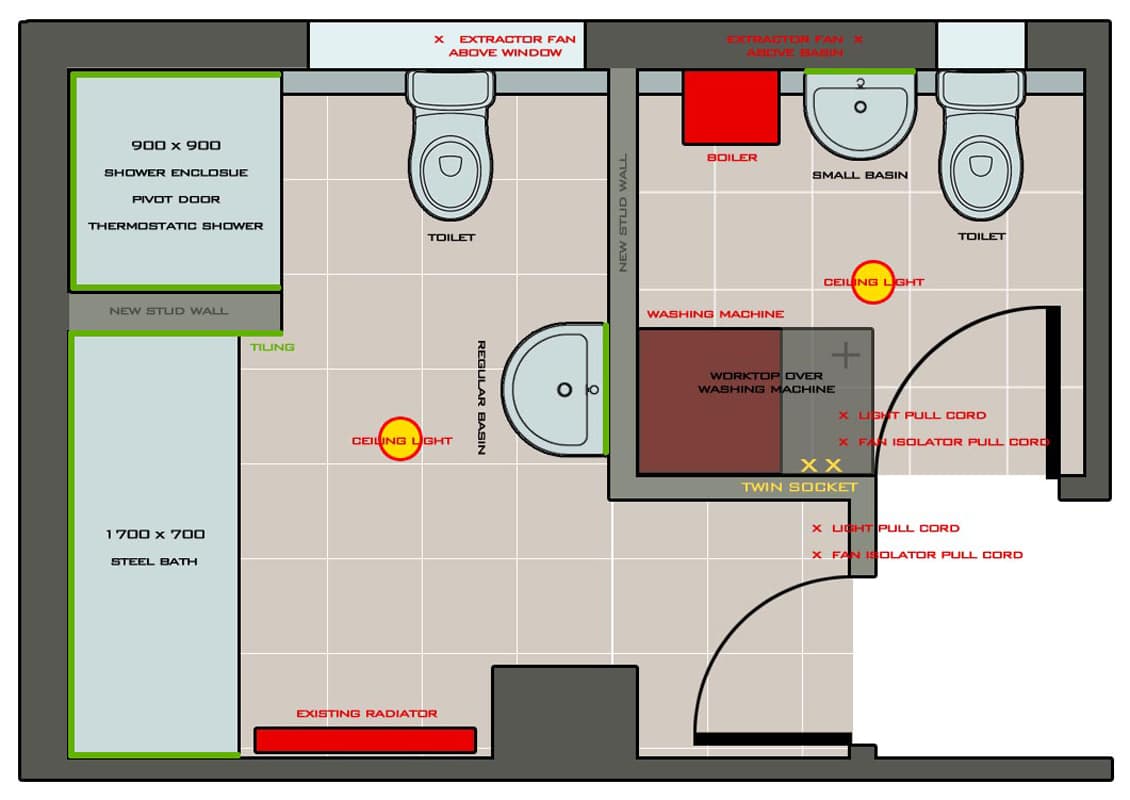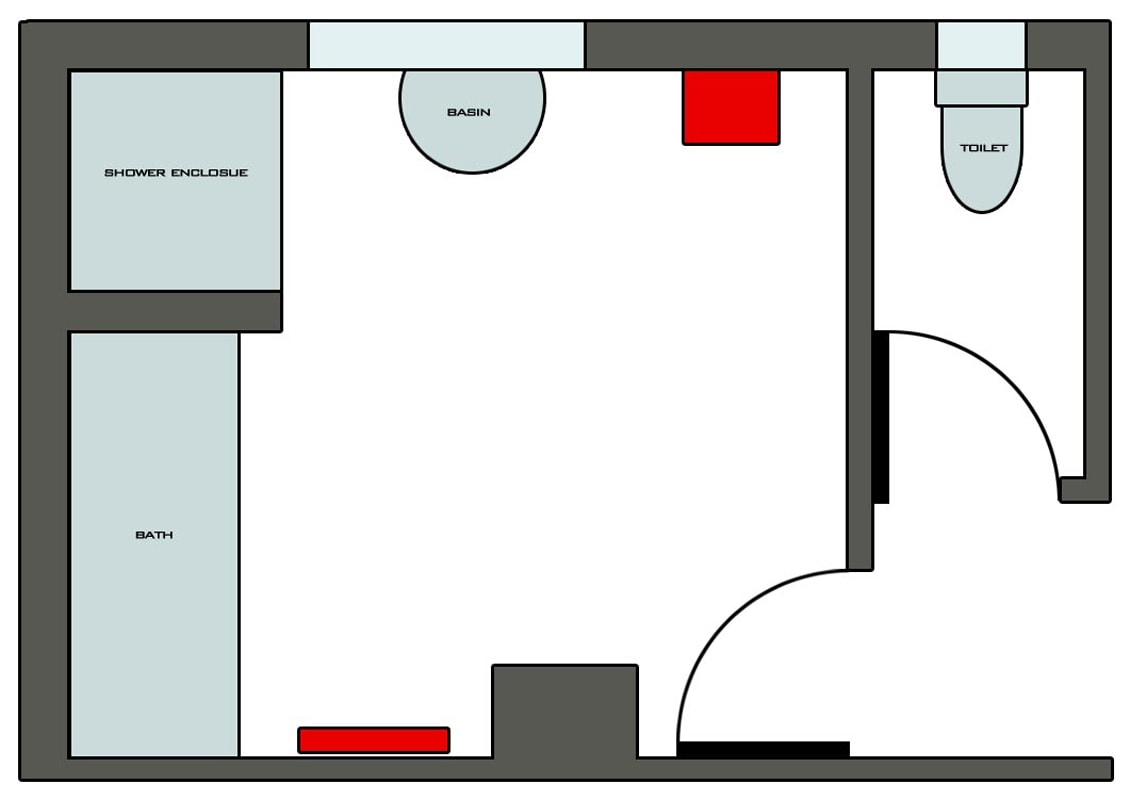This article will give you an idea of how long it takes to fit a bathroom, although obviously this is dependent on the level of work required. See my bathroom installation case studies for real timings.
Introduction
When a new bathroom is installed, you are often left without basic facilities for the duration of the work so it is worthwhile knowing how long this period of disruption will last. This article will help you to build up an accurate picture of what you can expect.
For some tricks of the trade that will help you to reduce this time and also how to deal with the lack of facilities whilst the work is carried out please see tips to reduce bathroom installation times.
The best way to ensure that your installation finishes on time is to set a realistic timescale, which is dependent on your experience, the level of work required and the availability of the various tradesmen involved such as plumbers, tilers, plasterers, electricians & joiners (unless you go with a turnkey solution such as uk bathroom guru)
Factors to consider
1. Who is doing the work
Most projects will be carried out in 1 of the 3 following ways or a mixture of 2 of them:
a) DIY
This route will probably take the longest out of the 3 options listed here and is largely dependent on your experience / knowledge of the installation process and planning skills.
b) Employing tradespeople
This route should be quicker than DIY but is dependent on your ability to:
- understand the work that is required – and crucially the order in which it should be carried out
- source & line up reliable, qualified tradesmen e.g. a plumber, tiler, electrician & plasterer
- ensure materials & tradesmen are available on site at the correct time.
- communicate with & co-ordinate all of the trades involved & assign responsibilities clearly
- manage the project as it progresses & deal with any issues that arise
c) Employing a turnkey provider e.g. uk bathroom guru
This route will probably be the quickest and will certainly be the easiest for you, as a single project manager oversees the project from start to finish, supplying all materials and managing their dedicated team through to completion (this is my business model).
You will only need to deal with one person and liability lies with one party – this can be extremely important as disagreements on renovation projects are very common, especially when responsibilities fall into the grey areas between the trades.
These teams will work together all the time and will have a clear understanding of each others roles and responsibilities, and should pull together better than a group of strangers you have assembled.
2. What you’re having done
Swopping a suite like for like is obviously going to be a lot quicker (& cheaper) to do than a full bathroom refurbishment which may include work with several different tradesmen:
- builders (for structural work such as knocking down walls etc)
- joiners
- tilers
- plasterers
- electricians
- plumbers
- floor fitters
It sounds obvious (and it is) but the more work involved, the longer a job takes and the more expensive it is.
3. The position of the new suite vs. the existing one
When you move items such as a bath or basin, you will also need to move the supply pipework that feeds them. This will involve lifting floorboards and notching / drilling holes in the joists beneith to the new required positions. The pipework may even need to be run in the walls.
You may also have to run new waste pipes from these items into the soil vent pipe or hopper outside, which may require drilling new holes through your external walls.
This is a particularly difficult task for a DIYer to accomplish due to the investment needed in specific tools for this job such as a core drill (or SDS at a push) and core drill bits + arbors etc.
If you decide to move the toilet to a new position, another larger hole will need to be drilled into the external wall to accommodate where the soil pipe needs to enter the room (behind the toilet.)
4. Other factors
The list of other factors is potentially endless but point to consider may include:
- Can the existing suite items be isolated via local isolation valves?
- If not, can the main stop tap be easily accessed?
- Can the hot water cylinder be isolated or are the gate valves seized open? i.e. will you have to drain the entire cylinder before working on hot pipework
- Is there a drain off valve on your radiators or will you have to isolate and remove a radiator before draining the water from one of the valves?
- Is your system gravity fed or not? If it is, bleeding radiators will take a long time
- Can you get a skip in the drive or will it be down the street?
- Is your bathroom on the ground floor of a bungalow or the 8th floor of a block of flats?
Summary
A straight forward bathroom suite swop may take a couple of days as it involves no more than swopping the existing bath, toilet & basin.
A more complete bathroom installation that may involve structural work, plumbing, electrics, gas, joinery, plastering, tiling and decorating may take 2 weeks (please see some case studies for more specific examples.)
For some tricks of the trade that will help you to reduce this time and also how to deal with the lack of facilities whilst the work is carried out please see tips to reduce bathroom installation times.
Also, please see my article entitled Top 5 Hidden bathroom installation costs to see examples of what additional work (that you may have not planned for) can occur.
Many thanks
Chris




